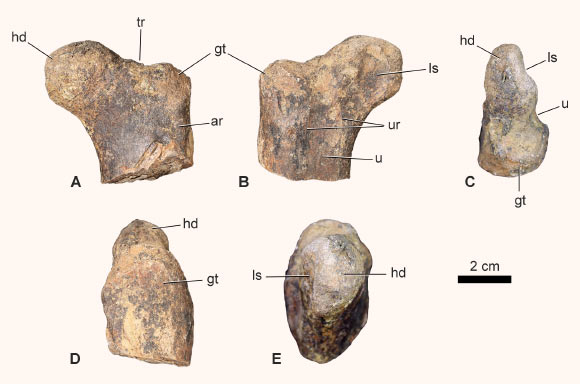The new specimen represents the world’s oldest cerapodan ornithischian dinosaur, according to a team of paleontologists from Sidi Mohamed Ben Abdellah University, the University of Birmingham and the Natural History Museum, London.

“Cerapoda is a diverse clade of ornithischian dinosaurs with a global distribution,” said Dr. Susannah Maidment, a paleontologist with the Natural History Museum, London, and the University of Birmingham, and colleagues.
“A major component of Cretaceous terrestrial ecosystems, early diverging cerapodans were bipedal, with forelimbs modified for grasping, but by the Late Cretaceous, hadrosaurids and ceratopsids had evolved obligate quadrupedality and sophisticated chewing mechanisms, and they became the dominant herbivores of the northern hemisphere.”
“Cerapoda is composed of two major clades: Ornithopoda, which includes the non-hadrosaurid iguanodontians and the duck-billed hadrosaurids, and Marginocephalia, which includes the horned, frilled ceratopsians and the dome-headed pachycephalosaurs.”
“Cerapodans are well known from the Cretaceous period, but their Jurassic record is much poorer,” they noted.
“Several track sites from the Middle Jurassic suggest that large-bodied ornithopods — probably iguanodontians — had already evolved by this time, but their body fossils remain elusive.”
“To elucidate the early stages of the evolution of Cerapoda and to help resolve the numerous phylogenetic inconsistencies among different analyses, new specimens are needed, especially from historically undersampled localities.”
The new cerapodan specimen — a portion of a left femur — was surface-collected in 2020 in the El Mers III Formation at Boulahfa, near Boulemane, Middle Atlas Mountains, Morocco.
The fossil is Bathonian (Middle Jurassic) in age, and dates to between 165 and 160 million years ago.
“The variegated green and red mudstones of the formation are extremely fossiliferous and have so far yielded the…
Read the full article here
